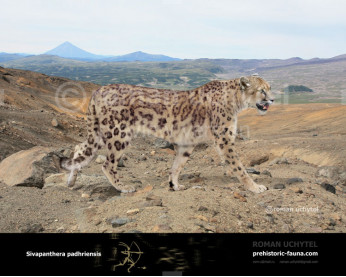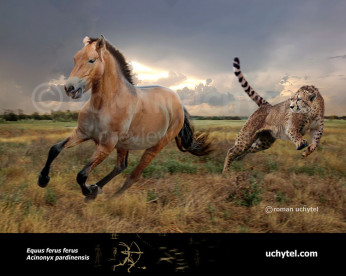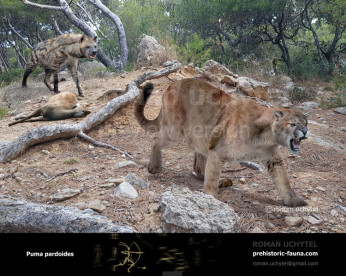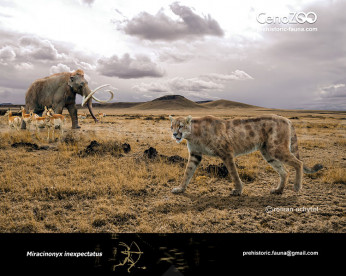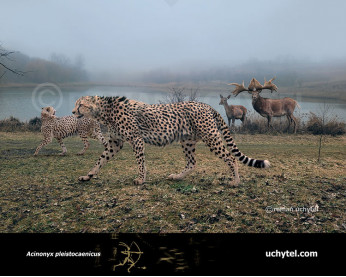Lake cat (Puma lacustris)
202131202131Lake cat (†Puma lacustris (Gazin, 1933))
Synonyms: Felis lacustris, Lynx lacustris
Order: Carnivora
Family: Felidae
Genus: Puma
Dimensions: length - 1,3 m, height - 64-60 сm, weight - 20-35 kg
Temporal range: during the Late Pliocene to Early Pleistocene epoch (North America)
The lake cat (Puma lacustris) is an extinct species of Puma from the Blancan stage (from the Late Pliocene to Early Pleistocene). The type specimen is a partial fragment piece of the right side of the mandible retaining canine and cheek-teeth found in the Hagerman Fossil Beds National Monument from Idaho. The holotype was described in 1933 by Gazin who considered a smaller relative of the cougar. The taxonomic identity has been uncertain at times, as a relationship (and classification) to lynxes has been purposed. Additional specimens of this species of Puma have been found elsewhere in North America, such as Washington, California, Arizona, Texas, and Baja California.
Lake cat (†Puma lacustris (Gazin, 1933))
Synonyms: Felis lacustris, Lynx lacustris
Order: Carnivora
Family: Felidae
Genus: Puma
Dimensions: length - 1,3 m, height - 64-60 сm, weight - 20-35 kg
Temporal range: during the Late Pliocene to Early Pleistocene epoch (North America)
The lake cat (Puma lacustris) is an extinct species of Puma from the Blancan stage (from the Late Pliocene to Early Pleistocene). The type specimen is a partial fragment piece of the right side of the mandible retaining canine and cheek-teeth found in the Hagerman Fossil Beds National Monument from Idaho. The holotype was described in 1933 by Gazin who considered a smaller relative of the cougar. The taxonomic identity has been uncertain at times, as a relationship (and classification) to lynxes has been purposed. Additional specimens of this species of Puma have been found elsewhere in North America, such as Washington, California, Arizona, Texas, and Baja California.


-797x638.jpg)


-70x56.jpg)

-346x277.jpg)
